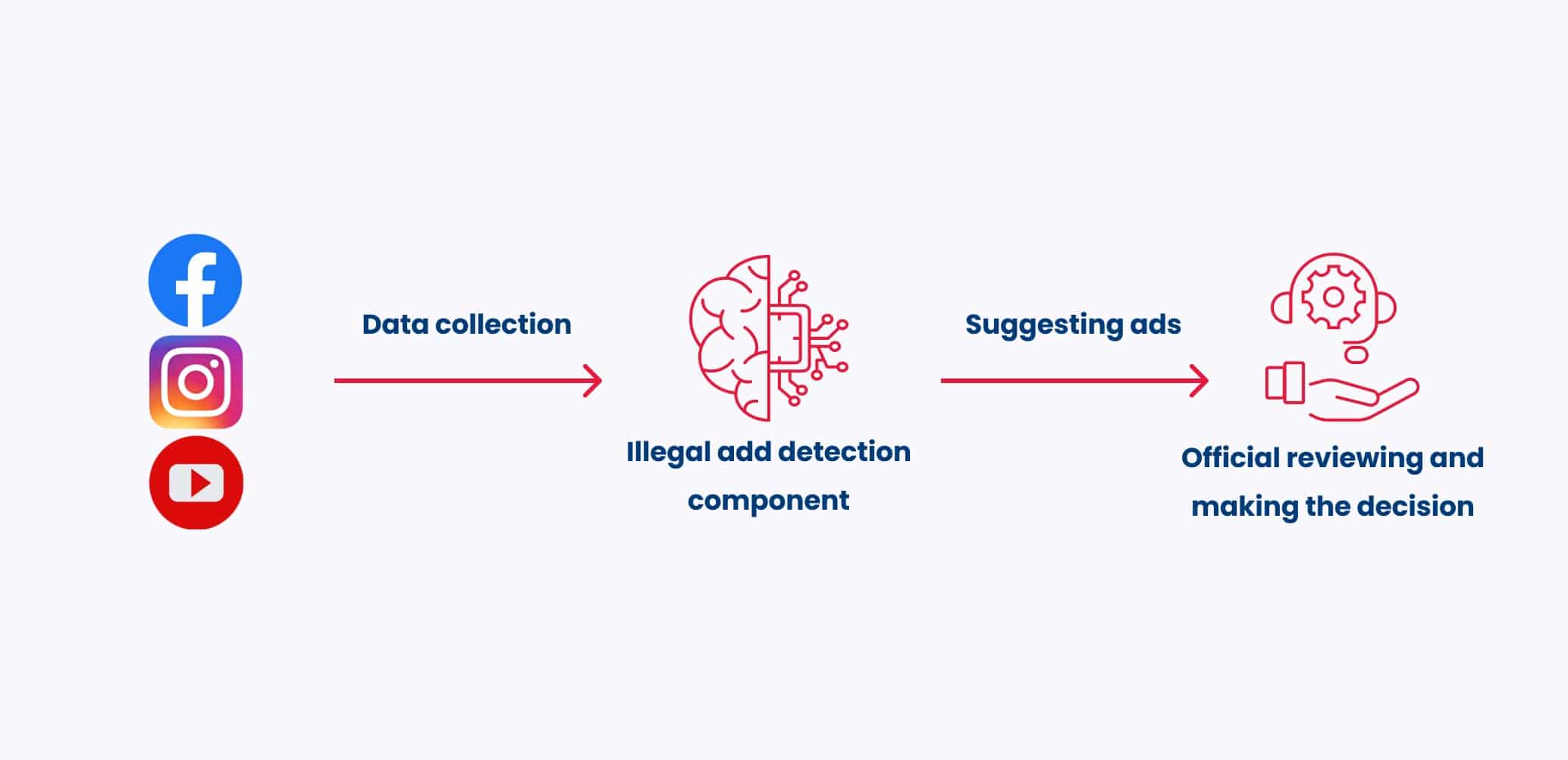MindTitan is going to develop an AI model for the public sector that will identify illegal ads on social media. The aim of the project is to provide an understanding of whether illegal ads can be detected in social media automatically using machine learning methods. Prohibited advertising includes, for example, the use of living beings and emotions in alcohol advertising, advertising contrary to good practice, or advertising financial services without certain disclaimers.

Why is this even important?
In today’s media, advertising is increasingly moving from public channels like streets, television and newspapers, to social media like Facebook, Instagram and Youtube. The use of social media channels in advertising is a growing trend every year. As shown by the 2018 Baltic Media Advertising Market Survey, online advertising accounted for almost 20% of the total advertising market, while the share of TV advertising has significantly decreased in the last seven years. Thus, advertising has moved and will continue to move even more from public channels to social media.

The Estonian Consumer Protection and Technical Regulatory Authority supervises the content and form of advertising published in all media. While advertising on public channels like TV, radio, outdoor advertising, banner advertising, and on the web can be inspected and it is possible to contact the advertiser, illegal ads in social media are more complicated to deal with. As Internet use is constantly growing, social media ads take prevalence, but they don’t always follow the strict legal restrictions set for a number of commercial and service sectors, such as alcohol, tobacco, financial services and gambling. By directing ads to private channels, enterprises make ads more difficult to monitor. Particularly social media ads are not visible for all users and it is not possible for a supervising organisation to approach social media platforms with requests for ad information. Today, there are no effective technical means to monitor online advertising.
Ads need to be monitored continuously (on a daily basis) and the results recorded, but officials do not have access to all ads as social media platforms show users different ads. Also, it is hard to physically control a constantly evolving flow of social media (e.g., influencer accounts). All this means that today a specific monitoring function is essentially unfulfilled and it is necessary to find an effective technical solution for monitoring.
How can the problem be solved?
To reach the goal, the following two outputs are to be created within the project
-
Analysis
-
Solution
The analysis will assess the following:
- The ability of machine learning methods to detect illegal ads
- Possible restrictions in using the methods e.g. the machine learning approach cannot discern the nuances of what makes an ad illegal, like noticing critical details on images.
- Possible changes in the monitoring process for applying machine learning methods in a more effective manner e.g. the automated approach will likely find a high number of candidates. The current process might not be able to handle all of them and either the process must be changed or a subset selected.
- Further possibilities in using the methods in the view of the development of process changes and technological ability e.g. If the illegal ad detection step is successful enough, it could be developed further to automate more of the process or handle a wider range of content, like short and long video content with interspersed promotional content.
Proof of concept system shall be able to automatically detect illegal ads on social media accounts.
Project solution can roughly be divided into two main components:
- Data collection
- Illegal ad detection

Data collection
As the aim of this component is to find and save as many potentially illegal ads, then the solution for this must be able to collect ads from as many social networks as possible (Instagram, Facebook, YouTube, etc.). The gathered data is saved to the database together with references on the source and time of saving. The saving of data follows a protocol that is developed during the analysis.
Illegal ad detection
This task can be seen as a specific case of explanatory machine learning because the aim is not to directly detect illegal ads, but to find signs of illegal ads from a large quantity of unstructured data – pictures and free text, and to assess these signs based on existing rules to decide whether these ads are legal or not.
Conclusion
Even though social media have their own systems for detecting illegal ads and prohibited content, every country has its own regulations, without an IT application, it is not possible to monitor social media because there is simply no access to advertising, and manual control is time-consuming. We believe that AI will help consumer protection and technical regulatory authority to fulfill its task in protecting consumers against illegal ads and prohibited content. By far this is not the last AI project for the government of Estonia to develop.

